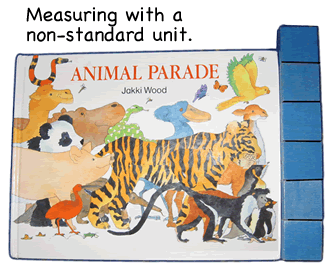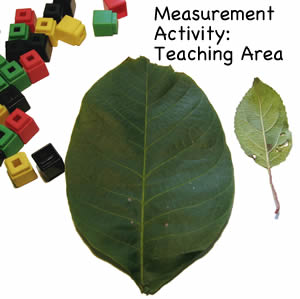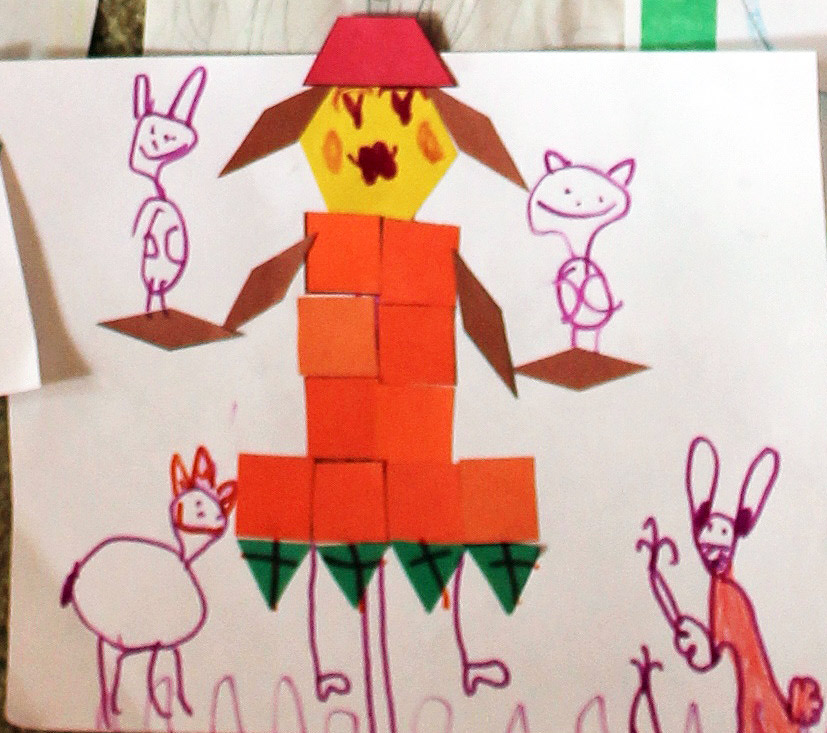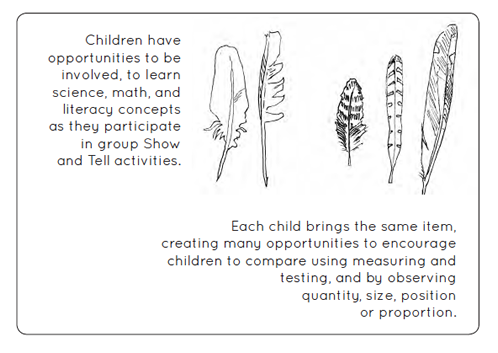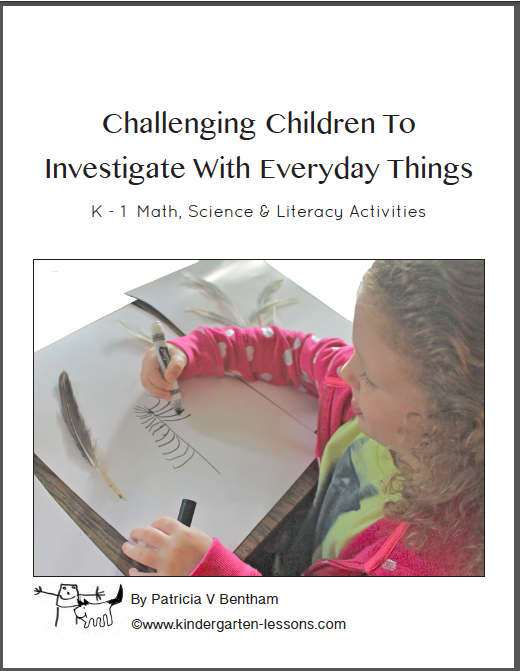Teaching measurement is fun! Provide lots of opportunities for your students to sort objects by size. Using everyday activities and experimenting with real objects help children understand measurement concepts.
The terms non-standard and standard are often used when describing prescribed learning outcomes for measurement.
Measuring with non-standard units means measuring things with blocks, pencils, hands, feet, etc. As long as the items used to measure with are all the same size, e.g. identical blocks or brand new pencils, they are suitable to use. For example, the book below is almost six blocks long.
Measuring with standard units means measuring with inches, feet, yards, centimeters or meters, using rulers and other measuring devices.
Measure anything!
Playing with bits and pieces around the classroom or playground, like old crab shells, leaves and crayons provides opportunities for introducing measurement vocabulary. Words such as measure, taller than, shorter than, wider than, narrower than, length, volume, weight, area, centimeter, meter, inches, feet, yards (choose depending on location), heavier, lighter can be used as children play with everyday items.
Comparing the length of a crab shell and crayons.
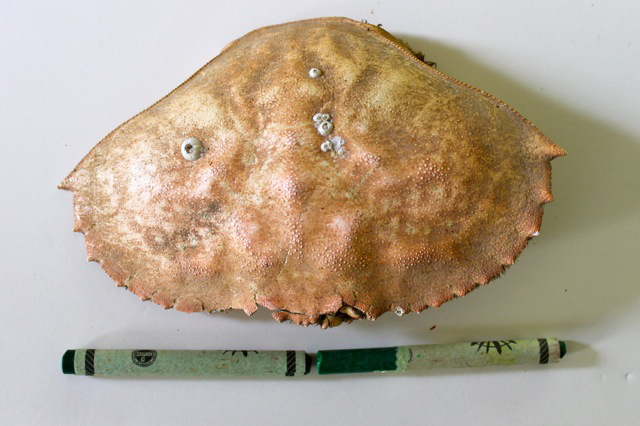
Comparing the length of a crab shell and leaves found on the playground.
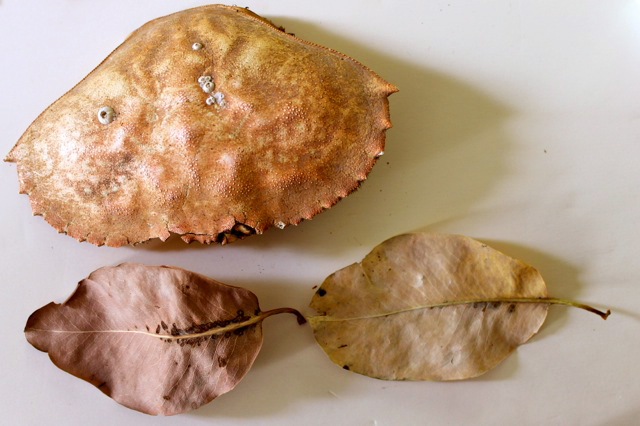
Teaching measurement – Area
A fun activity is to find two flat objects which look the same but are different sizes. Cover them with Unifix™ cubes and count how many blocks it takes to cover each one.
While on a walk one day, I found an enormous leaf about 7 inches long. I searched for a similar leaf that was very small but the same shape.
The children sat around the leaves and took turns placing Unifix™ cubes on top of the leaves, then counting them as a group. They then recorded their observations.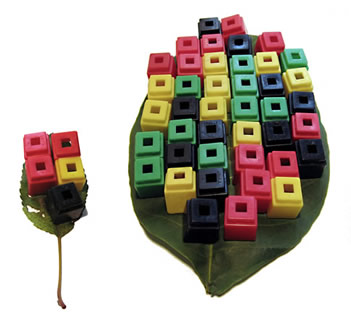
Art and Area
In the art activity below, students create a pattern square picture, then count how many blocks it takes to cover the dress of their creation.
Teaching Measurement – Volume
A water center is useful for providing opportunities for children to have many experiences with measuring volume. Build the children’s vocabulary as they experiment with pouring water into taller, shorter, narrower, and wider containers.
Example: “Did the narrow, tall container hold the same amount of water as the wide, short one?”
Teaching Measurement with Everyday Things
My e-book, “Challenging Children to Investigate With Everyday Things”, helps you conduct easy and engaging math and science lessons for young children. This resource shows you how to provide your students with a new science and math investigation every week of the year.
The book:
- Shows you how to use common objects to expand your math and science programs
- Tips for getting organized for simple weekly lessons
- Contains 39 detailed activities with 50 recording sheets that go with them
- Demonstrates how to set up your classroom for effortless investigations
- Shows you how to focus children on investigation, observation, inquiry, and recording their new knowledge
- Provides sample inquiry questions to prompt students
- Illustrates how to teach sorting and classification skills
- Provides math and science vocabulary lists to introduce to the students
- Lists Science skills practiced in the activities
- Lists Math skills practiced in the activities
- Common Core Standards (USA)
- Provides a year’s worth of weekly activities that you can use over and over each year
- Sample parent letter
- Illustrated lists for the items that students are to bring to school each week
- Many tried and tested tips for easy to carry out, enjoyable learning times with your students
If you’re interested in the book,you’ll find more information here….
